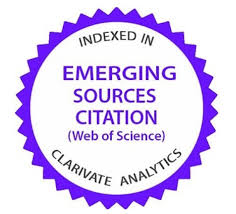Opaque Transparency
Why California’s Supply Chain Transparency Act is Unenforceable
DOI:
https://doi.org/10.35295/osls.iisl/0000-0000-0000-0925Palabras clave:
tráfico de personas, transparencia de la cadena de suministro, trabajo forzado en California, SB657Resumen
Los traficantes son agentes dinámicos, de gran fluidez: reaccionan bien a la demanda de los consumidores y a los sectores económicos sin regular, y se adaptan fácilmente para explotar las debilidades de las leyes vigentes. La globalización corporativa de los comercios y de las grandes cadenas de suministro ha contribuido a que el tráfico de personas se haya convertido en el negocio criminal de crecimiento más rápido en el mundo. El gobierno de California ha sido el primero en exigir que los negocios revelen a sus clientes su política anti-tráfico. El llamado California Transparency in Supply Chains Act (CATSCA), de 2010, obliga a los mayoristas a publicar en sus sitios web, de forma preeminente, las políticas que siguen - caso de que las tengan - para detectar y combatir el trabajo en esclavitud dentro de su cadena de suministro. Este artículo explora los requisitos del CATSCA y examina la efectividad legal de las normas sobre transparencia de California.
Descargas
Metrics
Estadísticas globales ℹ️
|
734
Visualizaciones
|
725
Descargas
|
|
1459
Total
|
|
Citas
AP, 2012. Slave Labour Targeted in California Law, Social Media. The Gleaner [online], 3 January. Available from: http://jamaica-gleaner.com/gleaner/20120103/news/news5.html [Accessed 4 December 2017].
California Alliance to Combat Trafficking and Slavery Task Force, 2007. Human Trafficking in California: Final Report [online]. Available from: http://www.ag.ca.gov/publications/Human_Trafficking_Final_Report.pdf [Accessed 1 December 2017].
Center for Women Policy Studies, 2005. Resource Guide for State Legislators. Model Provisions for State Anti-Trafficking Laws [online]. Washington, DC: The National Institute on State Policy on Trafficking of Women and Girls of the Center for Women Policy Studies. July. Available from: http://www.ncdsv.org/images/Resource%20Guide%20for%20State%20Legislators%20Trafficking.pdf [Accessed 4 December 2017].
Chuang, J., 2006. Beyond a Snapshot: preventing human trafficking in the global economy. Indiana Journal of Global Legal Studies [online], 13 (1), article 5. Available from: http://www.repository.law.indiana.edu/cgi/viewcontent.cgi?article=1323&context=ijgls [Accessed 12 December 2016], 137-164. DOI: https://doi.org/10.2979/gls.2006.13.1.137
Clawson, J.H., Dutch, N., and Cummings, M., 2006. Law Enforcement Response to Human Trafficking and the Implications for Victims: Current Practices and Lessons Learned [online]. Report submitted to the U.S. Department of Justice, Office of Justice Programs, National Institute of Justice. Available form: http://www.ncjrs.gov/pdffiles1/nij/grants/216547.pdf [Accessed 12 December 2016].
DeStefano, A.M., 2008. The War on Human Trafficking: U.S. Policy Assessed. NJ: Rutgers University Press.
Engle, E., 2004. Corporate Social Responsibility (CSR): Market-Based Remedies for International Human Rights Violations? Willamette Law Review, 40, 103.
Fahey, D.L., 2009. Can Tax Policy Stop Human Trafficking? Georgetown Journal of International Law [online], 40 (2), 345-404. Available from: https://ssrn.com/abstract=1381283 [Accessed 1 December 2017].
Feldman, D., 2003. Conflict Diamonds, International Trade Regulation, and the Nature of Law. University of Pennsylvania Journal of International Economic Law, 24 (4), 835.
Fletcher, L.E., Bales, K., and Stover, E., 2005. Hidden Slaves: Forced Labor in the United States. Free the Slaves & University of California: Human Rights Center. Berkeley Journal of International Law, 23 (1), 47-111.
Galland, A., 2010. Toward a Safe, Just Workplace: Apparel Supply Chain Compliance Programs. San Francisco, CA: As You Sow.
Gebauer, S., 2011. Complying with the California Transparency in Supply Chains Act 2010. Compliance & Ethics Professional [online], August. Available from: http://www.ul.com/global/documents/verificationservices/businesssegments/RS/California%20Transparency%20Compliance.pdf [Accessed 12 December 2016].
González Marcos, M., 2011. Are you sure that your shirt is slavery-free?: California Transparency in Supply Chains Act of 2010 [online]. Available from: http://hrlibrary.umn.edu/links/CaliforniaTrafficking2011.pdf [Accessed 14 June 2017].
Gorsen, M., and Bryden, D., 2015. UK Follows California’s Lead in Holding Companies Responsible for Slavery in Supply Chain. Supply & Demand Chain Executive [online], 12 August. Available from: http://www.sdcexec.com/article/12102329/uk-follows-californias-lead-in-holding-companies-responsible-for-slavery-in-supply-chain [Accessed 13 June 2017].
Harris, K.D., 2009. Smart on Crime. San Francisco, CA: Chronicle Books.
Harris, K.D., Attorney General, 2015. The California Transparency in Supply Chains Act. A Resource Guide [online]. California Department of Justice, Office of the Attorney General. Available from: https://oag.ca.gov/sites/all/files/agweb/pdfs/sb657/resource-guide.pdf [Accessed 4 December 2017].
Human Rights Center, 2005. Freedom Denied: Forced Labor in California [online]. Berkeley, CA: University of California. Available from: http://www.hrcberkley.org/download/freedomdenied.pdf [Accessed 1 December 2017].
Human Trafficking Awareness Coalition of Sarasota County, 2011. Statistics [online]. Available from: http://htsrq.weebly.com/statistics-and-information.html [Accessed 12 December 2017].
International Labour Organization, 2007. Statistics on forced labour, modern slavery and human trafficking [online]. Available from: http://www.ilo.org/global/topics/forced-labour/policy-areas/statistics/lang--en/index.htm [Accessed 12 December 2017].
Keenan, P.J., 2007. Do Norms still Matter? The Corrosive effects of Globalization on the vitality of Norms. University of Illinois College of Law: Law and Economics Working Papers [online], Paper 73. Available from: http://law.bepress.com/cgi/viewcontent.cgi?article=1072&context=uiuclwps [Accessed 12 December 2017].
Kim, K., and Chang, G., 2007. Reconceptualizing Approaches to Human Trafficking: New Directions and Perspectives from the Field(s). Loyola-LA Legal Studies, Paper No. 2007-47.
Kumar, N., 2005. Reinforcing Thirteenth and Fourteenth Amendment Principles in the Twenty-first Century: How to Punish Today's Masters and Compensate Their Immigrant Slaves. Rutgers Law Review, 58 (1), 303.
Lansink, A., 2004. Women and Migration Interim Report on Trafficking in Women [online]. Berlin: Committee on Feminism and International Law of the International Law Association. Available from: https://ila.vettoreweb.com/Storage/Download.aspx?DbStorageId=1102&StorageFileGuid=c5e88da9-340e-49d5-acd0-04e33ea881fb [Accessed 1 December 2017].
Locke, J., 1689/1988. Two Treatises of Government. Edited by Peter Laslett. Cambridge University Press, 305-306. DOI: https://doi.org/10.1017/CBO9780511810268
Locke, R., and Romis, M., 2007. Improving Work Conditions in a Global Supply Chain. MIT Sloan Management Review [online], winter. Available from: http://sloanreview.mit.edu/the-magazine/2007-winter/48212/improving-work-conditions-in-a-global-supply-chain/ [Accessed 12 December 2017].
Nagle, L.E., 2008. Selling Souls: the effect of globalization on human trafficking and forced servitude. Wisconsin International Law Journal [online], 26 (1). Available from: https://ssrn.com/abstract=1823718 [Accessed 2 December 2017].
National Human Trafficking Resource Center, 2011. Increasing Awareness and Engagement: Strengthening the National Response to Human Trafficking in the U.S. Annual Report 2011 [online]. Available from: http://www.polarisproject.org/resources/hotline-statistics [Accessed 12 December 2017].
Panjabi, R.K.L., 2009. Born Free Yet Everywhere in Chains: global slavery in the twenty-first century. Denver Journal of International Law Policy, 37 (1).
Pierce, S.C., 2011. Turning a Blind eye: US Corporate Involvement in Modern Day Slavery. The Journal of Gender, Race and Justice, 14 (577), 595-600.
Polaris, 2014. Sex Trafficking in the U.S.: A Closer Look at U.S. Citizen Victims [online]. Available from: https://polarisproject.org/sites/default/files/us-citizen-sex-trafficking.pdf [Accessed 15 June 2017].
RugMark Foundation North America, 2008. Annual Report 2008 [online]. Available from: https://goodweave.org/wp-content/uploads/2017/06/2008_Annual_Report.pdf [Accessed 1 December 2017].
U.S. Department of Labor, 2011. U.S. Department of Labor’s List of Goods Produced by Child Labor or Forced Labor [online]. Washington, D.C.: Bureau of International Labor Affairs, Office of Child Labor, Forced Labor, and Human Trafficking. Available from: https://www.dol.gov/ilab/reports/pdf/2011TVPRA.pdf [Accessed 5 December 2017].
U.S. Department of State, 2010. Trafficking in Persons Report 2010 [online]. June. Available from: https://www.state.gov/documents/organization/142979.pdf [Accessed 4 December 2017].
U.S. Department of State, 2012. Trafficking in Persons Report 2012 [online]. June. Available from: https://www.state.gov/j/tip/rls/tiprpt/2012/index.htm [Accessed 4 December 2017].
U.S. Department of State, 2016. Trafficking in Persons Report 2016 [online]. Available from: https://www.state.gov/documents/organization/258876.pdf [Accessed 4 December 2017].
United Nations Office on Drugs and Crime, 2006. Trafficking in Persons: Global Patterns [online]. Available from: http://www.unodc.org/pdf/traffickinginpersons_report_2006ver2.pdf [Accessed 15 June 2017].
Descargas
Publicado
Cómo citar
Número
Sección
Licencia
Derechos de autor 2018 Benjamin Thomas Greer

Esta obra está bajo una licencia internacional Creative Commons Atribución-NoComercial-SinDerivadas 4.0.
Los autores conservan el copyright de sus trabajos, que se publicarán en OSLS bajo una licencia Creative Commons Reconocimiento NoComercial SinObraDerivada. Puede consultar más detalles en: http://es.creativecommons.org/licencia/. Si no está de acuerdo con esta licencia, por favor, póngase en contacto con nosotros.
El autor concede los permisos necesarios para difundir la información bibliográfica del artículo, incluyendo el resumen, y autorizar a otros, incluyendo las bases de datos bibliográficas, de índices y servicios de alerta de contenidos, a copiar y comunicar esta información.
Para más información sobre los permisos para distribuir su artículo en cada fase de la producción, por favor, lea nuestra Política de Autoarchivo y Divulgación (en inglés).
Las condiciones de copyright con el nombre de autores y co-autores, y la licencia Creative Commons se mostrarán en el artículo. Estas condiciones se deben aceptar como parte del proceso de envío de un artículo a la revista. Por favor, asegúrese de que todos los co-autores se mencionan correctamente, y que entienden y aceptan estos términos.





















